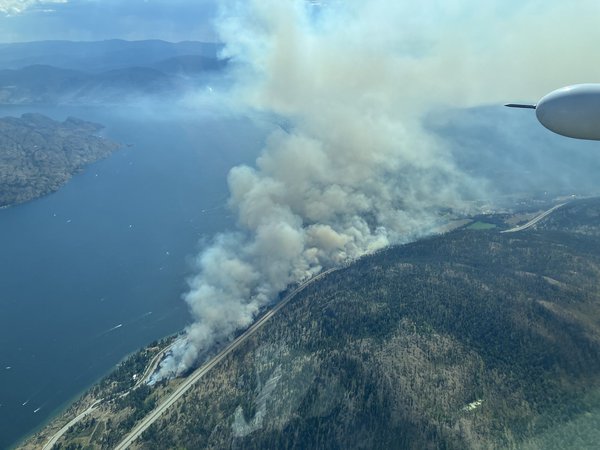AI-Generated Images Spark Misinformation Concerns Amidst BC Wildfire Season
VANCOUVER, British Columbia – As wildfire season intensifies across British Columbia, a new threat has emerged: the proliferation of AI-generated images depicting fabricated fire scenes, spreading misinformation and sowing confusion among the public. The BC Wildfire Service has issued a warning about these deceptive images circulating on social media, highlighting the potential for these artificially created visuals to mislead individuals about the true nature and severity of ongoing wildfires. The concern arises from the increasing accessibility and sophistication of AI image generation tools, enabling users to create realistic, yet entirely fabricated, depictions of wildfire events.
The BC Wildfire Service specifically cited two instances of AI-generated images shared on social media platforms, showcasing dramatic scenes of aircraft battling infernos. These images, while visually compelling, were deemed inaccurate representations of the actual terrain, fire size, and fire behavior observed in the wildfires they purportedly depicted. The concern lies in the potential for these fabricated images to be mistaken for genuine photographs, particularly by individuals quickly scrolling through social media feeds. This misinformation can lead to unwarranted panic, misallocation of resources, and hinder the efforts of firefighting crews and emergency responders.
One of the AI-generated images was initially posted by a self-proclaimed “digital creator” on Facebook on July 31st, accompanied by a caption referencing the Drought Hill fire near Peachland. The subsequent day, the post was edited to include a disclaimer stating the image was AI-generated and intended for “illustrative purposes only.” This incident highlights the ease with which AI-generated images can be disseminated without proper context or disclosure, potentially misleading unsuspecting viewers. The BC Wildfire Service emphasizes the importance of verifying information from official sources before sharing wildfire-related content on social media.
The emergence of AI-generated wildfire imagery presents a significant challenge for authorities battling misinformation. While the creator of the image eventually added a disclaimer, the initial dissemination without clear labeling underscores the risk of rapid, unchecked spread of false information. This incident serves as a reminder of the need for increased awareness and critical thinking when evaluating information shared on social media platforms, particularly during times of crisis.
The potential consequences of misinformation extend beyond individual confusion. False depictions of wildfire size and severity can lead to inaccurate assessments of risk, potentially hindering evacuation efforts or prompting unnecessary panic among residents. Furthermore, the spread of misinformation can erode public trust in official sources, making it more difficult for authorities to communicate accurate information and manage public safety effectively.
The BC Wildfire Service urges the public to rely on official channels, such as their website and social media accounts, for verified information about ongoing wildfires. They encourage individuals to critically examine the source and context of wildfire images before sharing them online. The increasing prevalence of AI-generated content necessitates a more discerning approach to information consumption and emphasizes the importance of media literacy in the digital age. As technology advances, the ability to differentiate between authentic and fabricated content becomes increasingly crucial, particularly in situations where misinformation can have significant real-world consequences.


